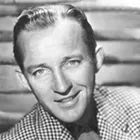We went to the store." For the third-graders in Jennifer Jensen's class at Freeman Elementary School, the possibilities of that simple sentence are endless.
Her class was spending a recent Friday morning parsing sentences -- where is the "who" in that sentence? (It's the "we.")
Good -- now where is the "what"? (It's the "went.")
And the "where"? (It's the "to the store").
And now Jensen is setting the class free, free to take that one model, that simple sentence and make as many more sentences from it as they can. The same kind of sentences that will have not just "who," "what" and "where," but also, maybe, "whens," "whys" and "hows."
It's getting close to lunchtime, and maybe that's why lots of the sentences that Mrs. Jensen's kids construct are about food, or even more specifically about ice cream.
"We went to the ice cream store," pens one student.
"We went to the ice cream store in October and got chocolate and vanilla," writes another.
The exercise walks a fine line between teaching the third grade about identifying the different parts of sentences on the one hand, a sober, noble goal, and, on the other, encouraging creativity, imagination and individuality.
It's the same line that teachers all over the state are walking, especially third- and fourth-grade teachers, who are faced with both preparing their charges for the all-important Washington Assessment of Student Learning (WASL) test and keeping their classrooms a place for self-discovery.
Jensen's classroom, and hundreds like it, is ground zero for education reform in Washington. Freeman Elementary is a school on the smaller side, in a fairly rural area only about 10 miles south of the Spokane Valley -- in an area that feels much farther away. The elementary school has 592 students, 91.2 percent of them white, and 22.6 percent eligible for a free or reduced price lunch.
Like many districts, large and small, the school has had its most persistent struggle with the writing section of the WASL.
While fourth-grade scores on reading, math and listening have generally been above average -- and going up over the years since 1996, when the test was first given -- the writing scores have remained stubbornly low. Year after year, only around 40 percent of Freeman students meet the standards the state has set for writing.
The writing section is particular difficult, says Jensen, because some of the school's best writers might not stick to the prompt given on the test, choosing instead to follow their imagination.
So, these days in Freeman, writing for the WASL looms large. Posters in Jensen's room extol different kinds of writing students might be asked to execute on the test, like letters, journal entries and stories. Another poster celebrates the "essential traits" of writing: organization, fluency, word choice, ideas, finding one's own voice.
A stocky boy who comes up with an astonishing 17 different laboriously printed variations on "We went to the store," inside of 10 minutes raises his arms above his head in triumph.
Another demonstrates exceptionally widespread use of adjectives, using "stinky," "cheesy," "vicious" and "cute" in the sentences he creates.
Even though Jensen's class is third-graders, and the real WASL crunch time doesn't hit for them until next year, the kids in her class are finely tuned to the realities of the looming test.
"I'll have to start working more," one of them says, judiciously. "I'll have to get more of my work done. I don't feel good about it."
"I feel good," one of his classmates interjects. "I am learning how I'm going. By the fourth-grade test, I'll be reading even better."
The conflicting answers make perfect sense to Jensen, and sum up a WASL truth: The test is the same, but every kid is different.
"I'm constantly asking myself, am I teaching the students what they need to know?" says Jensen, who attended Freeman Elementary school herself and has been teaching in the district now for five years.
The advent of the WASL has meant that Jensen has placed a higher emphasis on communication skills with her kids. Now they not only have to be able to solve math problems, they have to explain how they arrived at their final answers. When presented with a reading passage about which they will be asked to answer questions, Jensen's kids are taught to scan the questions first, so that they can read the passage already knowing what they are looking for.
Jensen says she believes meeting the test's goals have made her a more focused teacher, and made her kids more advanced. They are reading in kindergarten now, and being pushed to excel perhaps more than ever.
But that doesn't mean that Jensen's found a magic formula, a perfect balance. And it doesn't mean, she says, that she doesn't question herself, doesn't wonder whether her kids are absorbing the large amounts of information they are getting, or whether she's doing enough to make sure that school is still fun -- that it is still creative.
"I'm teaching more and more all the time," she says. "I'm trying to get everything in."
The WASL is one way to measure her success. But as Jensen herself knows, it's not the only way. "We are learning, too," she says of her and the other teachers. "We are learning how to meet these goals."














